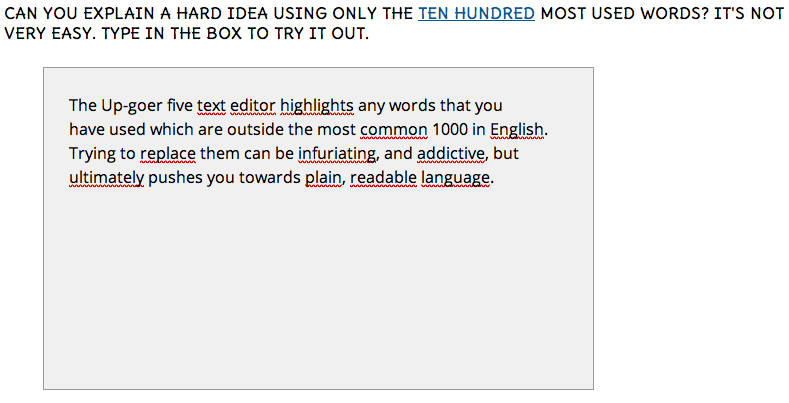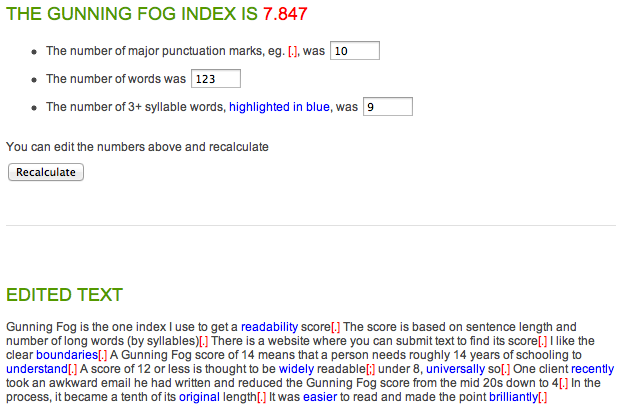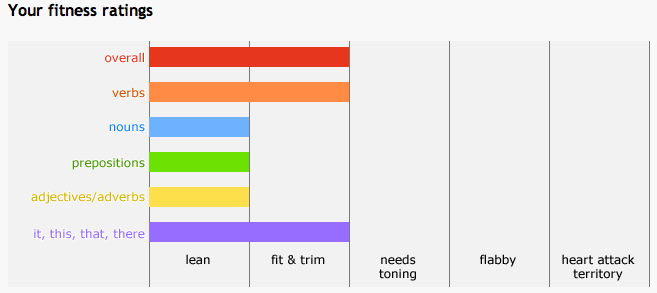Readability Tools that Actually Improve Your Writing
Search for readability tools and you’ll find loads. Many of them will give you a list of scores for a glut of different indexes. You’ll wonder what the difference is between SMOG, Flesch-Kincaid, ARI, Coleman Liau…?
The answer is very little. Also, who cares? Let me share with you four tools I actually use to help clients to improve the readability of their writing. All the tools are free, online, and easy to use.
Up-Goer Five
The Up-goer five text editor highlights any words outside the most common 1,000 in English. Trying to replace them can be infuriating, and addictive, but ultimately pushes you towards plain, readable language.
Sorry to interrupt…
If you like what you've read so far, join us on LinkedIn to talk all things digital product development with our team of experts.
In the end, you do not need to keep to such a small group of words. But the Up-goer Five works because it trains you to find more simple and clear words that everyone can read. These three lines only use words from the top 1,000 – and you can understand them well enough, right?
Gunning Fog index
Gunning Fog is the one index I use to get a readability score. The score is based on sentence length and number of long words (by syllables). There is a website where you can submit text to find its score.
I like the clear boundaries. A Gunning Fog score of 14 means that a person needs roughly 14 years of schooling to understand. A score of 12 or less is thought to be widely readable; under 8, universally so.
One client recently took an awkward email he had written and reduced the Gunning Fog score from the mid 20s down to 4. In the process, it became a tenth of its original length. It was easier to read and made the point brilliantly.
Google reading level filter

The Google reading level filter is useful for comparing the readability of whole websites against each other.
Using the advanced search in Google, you can perform a blank search of a specific website and ‘annotate results with reading levels’.
The search results will be topped with a chart showing what percentage of the website’s pages are considered basic, intermediate and advanced when it comes to reading level. For example, check out some of the UK’s leading newspapers:

Results still need interpretation. For example, that surprisingly high percentage of advanced reading level pages at The Sun? They are mostly adverts in their Business Directory, not writing.
But if you’re looking for an overview of readability in a website, it’s a quick and easy tool to use. Just don't forget – basic is good.
The Writer's Diet
The Writer's Diet readability tool goes one step further by looking at grammar. Specifically, it analyses your writing sample for:
- Overuse of be, weak and passive verbs
- Ideas not anchored in concrete language or too many nominalisations
- Long strings of prepositional phrases that drive verbs and nouns apart
- Overuse of adverbs and adjectives
- Too many waste words – it, this, that, there
Test results are amusingly phrased in fitness terms and you can download a full diagnosis that explain the principles behind the analysis.
I find the Writer's Diet tool helpful for going beyond mere sentence and word length, to remind me about elements of style that make writing easier to read.
Originally published on SmyWord.com
Ready to solve your problems?
We'll help meet the challenges facing your growing business. Get in touch and tell us what you need, the team can't wait to hear from you.





